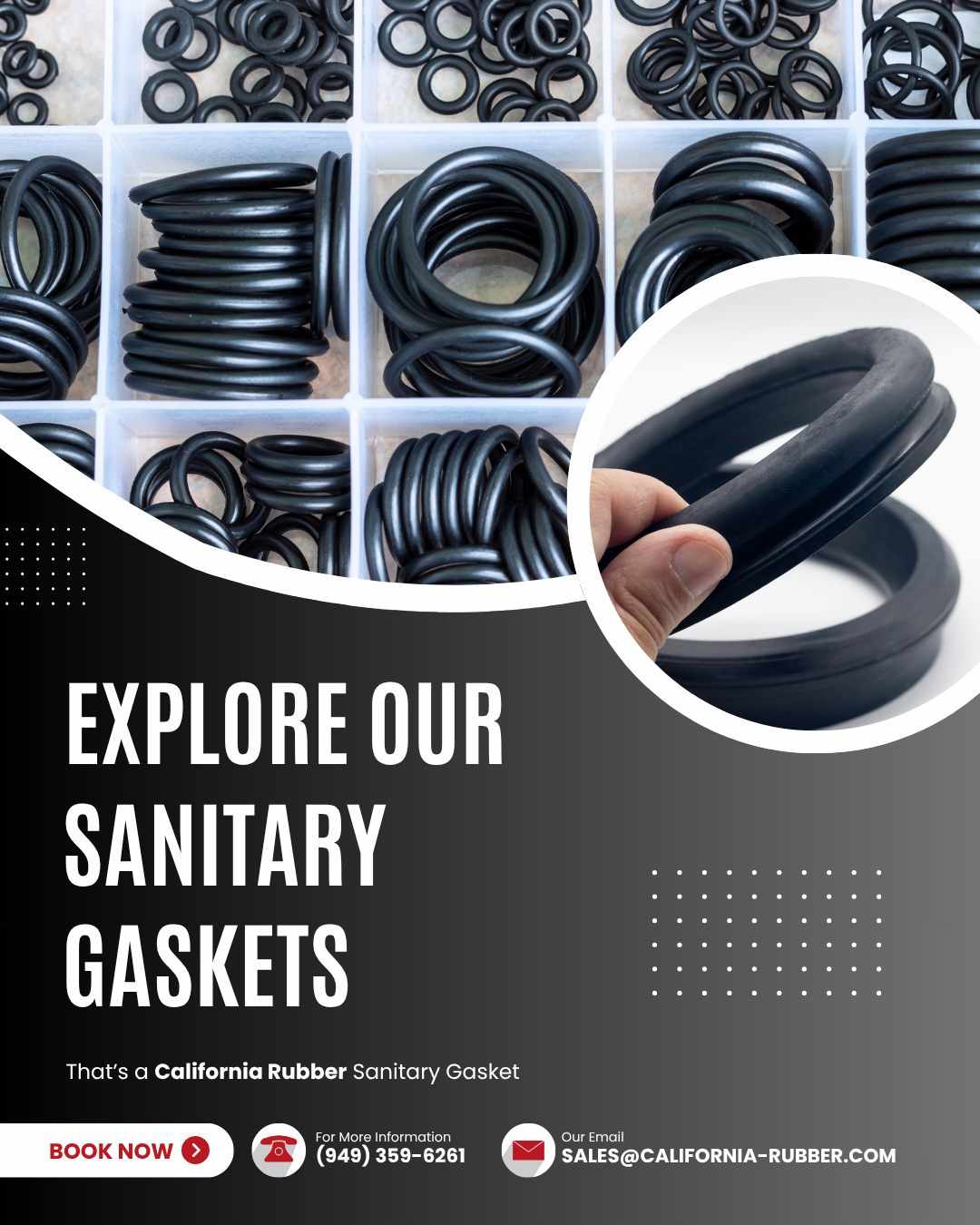
In industrial pumping systems, especially where precision and durability are non-negotiable, AODD valve balls play a critical role. These unsung components regulate fluid flow in Air-Operated Double Diaphragm (AODD) pumps, ensuring efficient operation across sectors like chemical processing, food and beverage, pharmaceuticals, and wastewater treatment.
But even the most rugged valve balls have a limited service life. Ignoring the warning signs of wear can result in reduced pump performance, unplanned downtime, and costly repairs.
At California Rubber, we’ve worked directly with maintenance teams and OEM engineers for decades. In this blog, we’ll walk you through the top five signs your AODD valve balls need replacement, backed by real-world experience and rubber manufacturing expertise.
1. Inconsistent Flow Rates or Loss of Prime
If your AODD pump is losing prime frequently, or the flow rate is fluctuating without changes in pressure or volume demand, worn valve balls may be the culprit.
Why It Happens:
Valve balls act as check valves, opening and closing with the pump’s diaphragm motion to allow directional fluid movement. When these balls become deformed or coated with residue, they can fail to seat properly, causing air entrapment or backflow—leading to inconsistent performance.
What to Do:
Inspect your valve balls during scheduled maintenance. If they appear out-of-round, pitted, or excessively worn, it’s time for a replacement.
2. Visible Damage or Material Degradation
Industrial fluids are often abrasive, corrosive, or laden with particulates. Over time, this takes a toll on the valve balls, especially if the material is not properly matched to the application.
Common Signs of Physical Damage:
Cracks or splits
Flattened surfaces
Swelling or softening (common in rubber-based balls)
Discoloration or blistering (may indicate chemical incompatibility)
Expert Tip:
At California Rubber, we advise customers to select AODD valve balls based on fluid compatibility. For instance, PTFE (Teflon) offers excellent chemical resistance, while Santoprene® is ideal for sanitary and abrasive applications.
3. Increased Pump Noise or Vibration
When valve balls aren’t functioning properly, the check valve system becomes inefficient. This inefficiency often results in abnormal noise or vibration from the pump.
Experience-Based Insight:
A healthy AODD pump operates with a rhythmic “click-clack” sound. If that sound becomes erratic, louder, or accompanied by vibrations, the internal components—often the valve balls—may be misaligned, damaged, or not sealing properly.
Ignoring these signs can accelerate wear on other pump parts like the seats, diaphragms, or manifolds.
Also Read: Common Causes of AODD Pump Failure and How to Avoid Them
4. Leakage or Product Contamination
In food, beverage, or pharmaceutical operations, maintaining product purity and hygiene is critical. Worn-out AODD valve balls may fail to close completely, causing cross-contamination or backflow leaks.
Compliance Concern:
For industries following FDA, USDA, or 3A sanitary standards, a single valve failure can lead to failed audits or discarded batches. Frequent quality control failures or process deviations should trigger a review of pump components—including valve balls.
Solution:
At California Rubber, we offer FDA-compliant valve balls made from materials like EPDM, Buna-N, and white PTFE to ensure hygiene, durability, and trustworthiness in sensitive applications.
5. Frequent Cavitation or Air Locking Issues
Cavitation—caused by vapor bubbles forming and collapsing inside the pump—can be intensified by malfunctioning valve balls. When balls do not seal correctly, fluid pressure drops, creating conditions for cavitation or air locking.
Real-World Scenario:
A client in the mining industry reported excessive cavitation and pump downtime. After investigation, the cause was traced to excessively worn rubber valve balls that were no longer seating correctly. Replacing them with abrasion-resistant polyurethane versions resolved the issue immediately.
How Often Should You Replace AODD Valve Balls?
There is no one-size-fits-all answer, but here are some expert guidelines:
High-cycle operations: Inspect every 3–6 months
Chemical processing or abrasive media: Inspect every 500–1,000 hours
Sanitary applications: Inspect every batch or weekly, depending on volume
Always keep a record of past replacements and operational hours. Predictive maintenance reduces downtime and prevents unexpected failures.
Why Trust California Rubber for AODD Valve Balls?
As a custom rubber parts manufacturer with decades of experience serving California-based industries, California Rubber is not just a supplier—we’re a strategic partner in pump performance.
Here’s why customers across food processing, chemical, and wastewater sectors trust us:
Application-specific recommendations
FDA- and OEM-compliant materials
Fast turnaround on custom-molded valve balls
Precision manufacturing to ensure perfect seating and longevity
Responsive, knowledgeable support team
Whether you use Wilden®, Sandpiper®, Versa-Matic®, or Yamada® AODD pumps, we provide valve balls engineered for perfect compatibility and maximum durability.
Download Our AODD Pump Maintenance Checklist
Need Replacement AODD Valve Balls?
We stock and manufacture a wide variety of AODD valve balls in materials such as:
Buna-N (Nitrile) – Oil resistance, flexible
EPDM – Steam and chemical resistance
PTFE (Teflon®) – Excellent chemical compatibility
Polyurethane – Superior wear resistance
Santoprene® – Sanitary and durable
📩 Contact Us Today to get a quote or speak directly with an experienced engineer.
FAQs
Q1: How long do AODD valve balls last?
A: It depends on the media and operating conditions, but most should be inspected between 500–1000 hours of use.
Q2: What material is best for chemical-resistant valve balls?
A: PTFE (Teflon) or Viton are ideal for aggressive chemicals.
Q3: Can I replace AODD valve balls without removing the pump?
A: In most designs, the pump must be opened to access and replace the valve balls safely.
External Resources
Wilden Pumps – Official Site
Written by: John Smith, Senior Product Engineer at California Rubber
20+ years of experience in rubber component design for fluid systems in aerospace, food processing, and industrial applications.



Write a comment ...